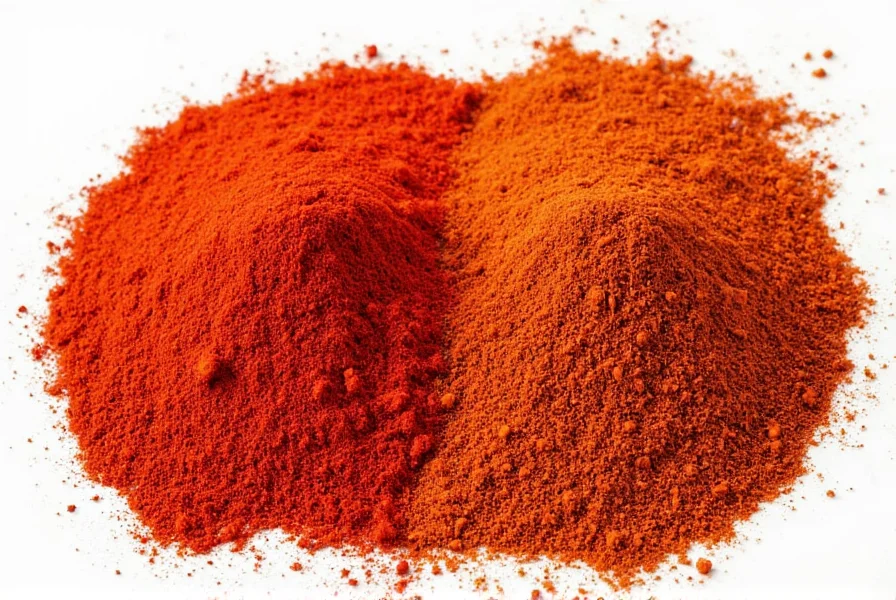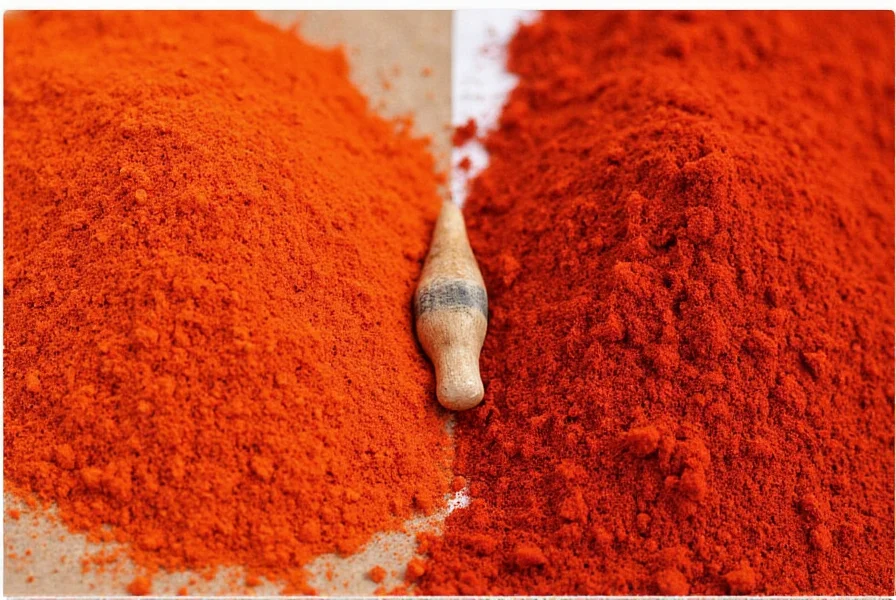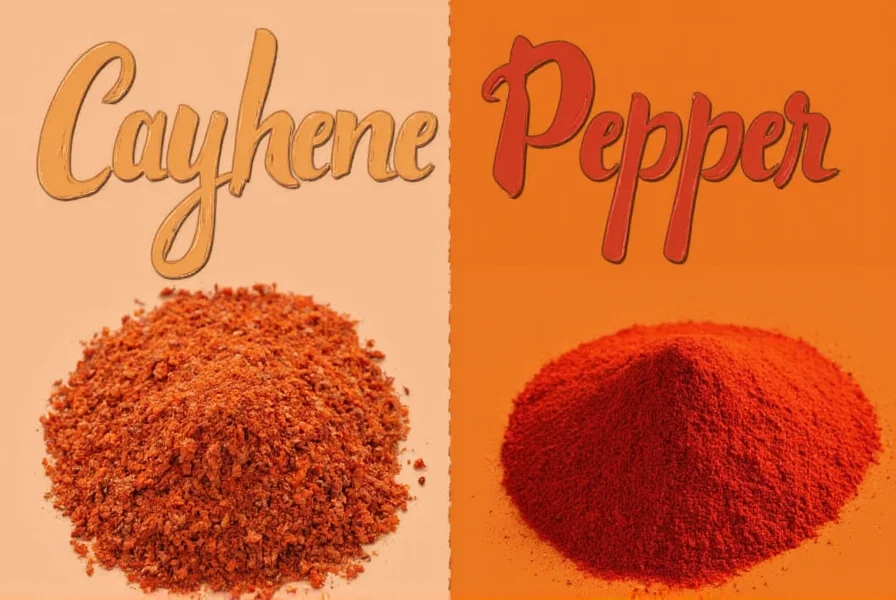Understanding the distinction between cayenne pepper and paprika is essential for home cooks and culinary enthusiasts. These two red spices often sit side by side in pantries but serve dramatically different purposes in cooking. While they share a common origin as dried and ground chili peppers, their flavor profiles, heat levels, and culinary applications vary considerably. Using the wrong one can transform a dish from perfectly seasoned to inedibly spicy or disappointingly bland.
Core Differences Between Cayenne Pepper and Paprika
The most critical difference lies in their heat intensity. Cayenne pepper consistently delivers significant heat, typically measuring between 30,000 and 50,000 Scoville Heat Units (SHU). This places it firmly in the medium-to-hot category of spices. Paprika, by contrast, spans a much wider spectrum—from completely sweet and mild (0 SHU) to moderately hot (up to 10,000 SHU), depending on the pepper varieties used and regional styles.
Flavor profiles further distinguish these spices. Cayenne offers a straightforward, sharp heat with subtle fruity undertones but minimal complexity beyond its spiciness. Paprika provides more nuanced flavors that can include sweet, earthy, smoky, or even slightly bitter notes, particularly in Hungarian or Spanish varieties. Smoked paprika (pimentón) adds a distinctive wood-fired dimension that cayenne cannot replicate.
| Characteristic | Cayenne Pepper | Paprika |
|---|---|---|
| Heat Level (Scoville) | 30,000-50,000 | 0-10,000 (varies by type) |
| Primary Flavor | Sharp, fiery heat | Sweet, earthy, sometimes smoky |
| Color Contribution | Bright red (can fade with heat) | Vibrant red (more stable color) |
| Pepper Varieties Used | Primarily cayenne peppers | Various sweet/hot peppers including Capsicum annuum |
| Common Culinary Uses | Hot sauces, spicy rubs, Cajun/Creole dishes | Goulash, roasted meats, deviled eggs, color enhancement |

Culinary Applications and Substitution Guidance
When considering cayenne pepper versus paprika in recipes, understanding their appropriate applications prevents culinary disasters. Cayenne works best when you need consistent, pronounced heat—think hot sauces, buffalo chicken wings, or spicy marinades. Its heat penetrates dishes thoroughly and remains relatively stable during cooking.
Paprika shines in dishes where color and subtle flavor matter as much as heat. Hungarian goulash relies on sweet paprika for its characteristic deep red color and earthy flavor, while Spanish paella often features smoked paprika for its distinctive aroma. The question of can I substitute paprika for cayenne depends entirely on your desired outcome. In most cases, substituting equal amounts will disappoint—paprika won't provide sufficient heat, while cayenne lacks paprika's complex flavor notes.
For successful substitutions:
- Replace cayenne with paprika only when reducing heat is your goal (use 2-3 times more paprika for similar color)
- When substituting cayenne for paprika, add just a pinch (⅛ teaspoon) to provide heat while maintaining color with additional tomato paste or red bell pepper
- For smoked paprika vs cayenne pepper applications, consider adding a drop of liquid smoke with cayenne to approximate the smokiness
Nutritional Profiles and Health Considerations
Both spices offer nutritional benefits, though their concentrations differ due to processing methods. Cayenne contains higher concentrations of capsaicin—the compound responsible for chili heat—which has been studied for potential metabolic benefits and pain relief properties. A single teaspoon of cayenne provides about 5% of your daily vitamin A and 6% of vitamin E requirements.
Paprika generally contains more vitamin C and carotenoids, particularly in sweet varieties. The question of paprika vs cayenne nutritional value reveals that paprika typically has higher antioxidant content due to the broader range of peppers used in its production. Both spices are low in calories (about 6 calories per teaspoon) and contain trace amounts of iron and potassium.

Common Misconceptions Clarified
Many home cooks mistakenly believe that all paprika is mild or that cayenne is simply "hot paprika." In reality, Hungarian paprika comes in eight distinct varieties ranging from sweet to hot, while cayenne maintains consistent heat levels. The confusion between smoked paprika vs cayenne pepper is particularly common—smoked paprika provides deep, complex flavor without overwhelming heat, whereas cayenne delivers straightforward spiciness without smokiness.
Another frequent error involves storage practices. Both spices lose potency over time, but cayenne's heat diminishes faster than paprika's color and flavor. Store both in airtight containers away from light and heat, but replace cayenne every 6 months and paprika every 12 months for optimal results.
Practical Tips for Home Cooks
When working with these spices, consider these professional techniques:
- Bloom spices in oil before adding to dishes—this enhances both flavor and color dispersion, especially important when using paprika which can become bitter if added directly to high heat
- Layer heat by using both spices: a base of paprika for color and flavor with a touch of cayenne for heat creates balanced complexity
- Test as you go with cayenne—its heat builds gradually and can become overwhelming if added too liberally at once
- Consider regional varieties—Hungarian sweet paprika differs significantly from Spanish smoked paprika, just as African bird's eye cayenne differs from standard cayenne
Understanding the difference between cayenne and paprika transforms your cooking from hit-or-miss to consistently excellent. Whether you're wondering is cayenne hotter than paprika (generally yes) or seeking the perfect spice for your recipe, recognizing their unique properties ensures your dishes achieve the intended flavor profile every time.
Frequently Asked Questions
Can I substitute paprika for cayenne pepper in recipes?
Yes, but with significant adjustments. Use 2-3 times more paprika to maintain color, but recognize it won't provide equivalent heat. For hot paprika varieties, you might achieve moderate substitution, but sweet paprika won't replicate cayenne's heat level. When substituting cayenne for paprika, use just a pinch (⅛ teaspoon) to avoid overwhelming heat while maintaining color with additional tomato elements.
Why does my paprika taste bitter when I cook with it?
Paprika develops bitter flavors when exposed directly to high heat. To prevent this, bloom it in oil first at medium-low temperature before adding other ingredients. Never add paprika directly to a hot, dry pan. This technique, common in Hungarian cuisine, extracts the flavor compounds gently without burning the delicate pigments.
Does cayenne pepper have the same health benefits as fresh chili peppers?
Dried cayenne pepper retains most capsaicin and many antioxidants found in fresh peppers, though some vitamin C is lost during drying. The concentration of beneficial compounds is actually higher by weight in dried form. Both forms offer metabolic and anti-inflammatory benefits, but dried cayenne provides more consistent dosing for culinary applications seeking health benefits.
How can I tell if my paprika is still fresh?
Fresh paprika should have vibrant red color and a sweet, earthy aroma. If it appears dull brownish-red or has little scent, it's lost potency. Perform a simple test: place a pinch in warm oil—if the oil doesn't turn a rich red color within 30 seconds, the paprika has degraded. Properly stored paprika maintains quality for about 12 months, while cayenne lasts approximately 6 months before significant flavor loss.
What's the difference between smoked paprika and regular paprika?
Smoked paprika (pimentón) is made from peppers dried over oak fires, giving it a distinctive smoky flavor absent in regular paprika. It comes in sweet (dulce), bittersweet (agridulce), and hot (picante) varieties. Regular paprika is air-dried without smoke exposure. Smoked paprika works well in barbecue rubs and bean dishes, while regular paprika suits applications where pure pepper flavor is desired without smokiness.











 浙公网安备
33010002000092号
浙公网安备
33010002000092号 浙B2-20120091-4
浙B2-20120091-4